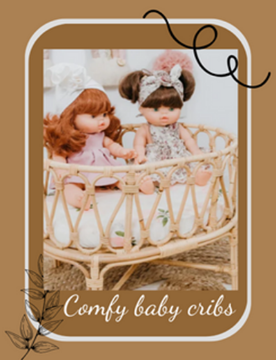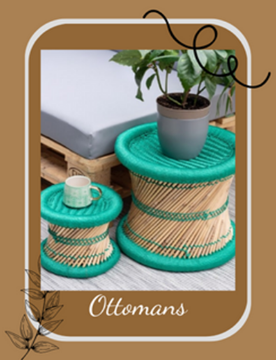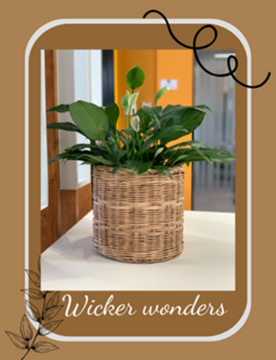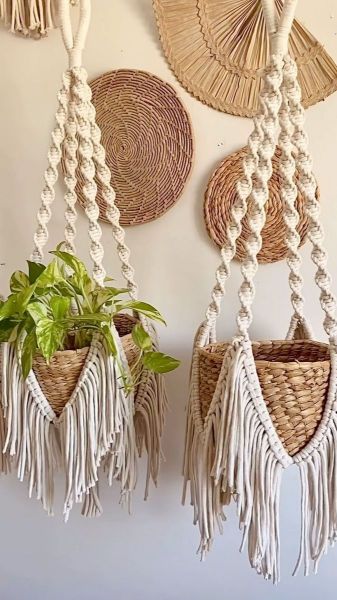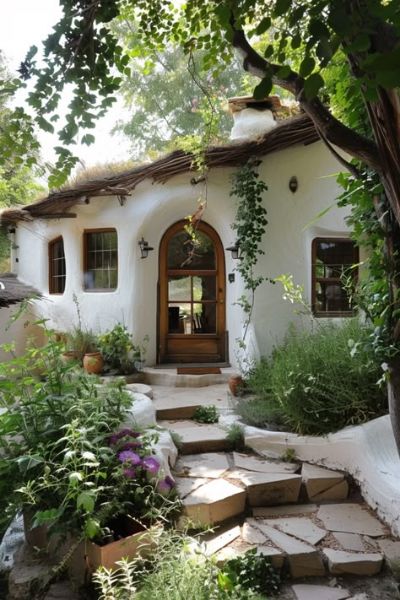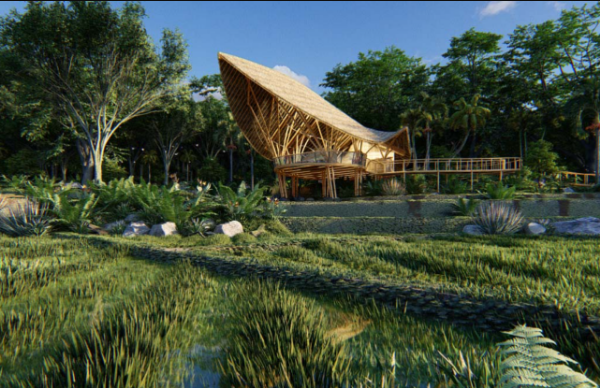In a world increasingly dominated by mass production and automation, there exists a fragile yet resilient thread connecting us to our past—macrame handcraft culture. This ancient art form, characterized by intricate knotting techniques that transform simple materials into functional masterpieces, stands as a testament to human ingenuity and artistic expression. When applied to bamboo and rattan furniture making, these techniques have created some of the most sustainable, durable, and aesthetically pleasing home furnishings across generations.
However, as we navigate the complexities of modernization, this rich cultural heritage faces unprecedented challenges. The gentle hands that once meticulously knotted and wove natural fibers are gradually being replaced by mechanical processes. Traditional bamboo and rattan artisans—once revered in their communities—now struggle to compete with mass-produced alternatives that flood global markets at fractions of the cost, though rarely matching the quality and character of handcrafted pieces.
This shifting landscape raises profound questions: What do we lose when ancient crafting techniques fade into obscurity? How can we balance technological progress with cultural preservation? And perhaps most urgently, what happens to the livelihoods and communities built around these traditional skills?
Join us as we explore the remarkable world of macrame handcraft culture, particularly as it relates to bamboo and rattan furniture production. We'll journey through its storied history, examine its current challenges, and discover how artisans and conscious consumers alike are working to ensure this beautiful tradition continues to thrive in an increasingly mechanized world.
The Rich Heritage of Macrame in Bamboo and Rattan Craftsmanship
Historical Roots of Macrame Techniques
Macrame—derived from the Arabic word "migramah" meaning "fringe"—has ancient origins that stretch back thousands of years. Archaeological evidence suggests that early forms of decorative knotting were practiced by Babylonian and Assyrian civilizations as early as the 13th century BCE. These techniques eventually spread across continents, evolving distinctly in different cultures while maintaining the core principle of creating intricate patterns through systematic knot-tying.
When applied to furniture making, particularly with bamboo and rattan materials, macrame techniques took on new dimensions. In Southeast Asia, where both bamboo and rattan grow abundantly, indigenous communities developed sophisticated methods for transforming these flexible yet sturdy materials into furniture that was both beautiful and functional. The marriage of natural fibers with knotting techniques created pieces that were not only structurally sound but also aesthetically pleasing.
Cultural Significance Across Regions
The practice of handcrafted bamboo and rattan furniture making holds profound cultural significance across diverse regions:
- Southeast Asia: In countries like Indonesia, the Philippines, Vietnam, and Thailand, rattan and bamboo craftsmanship represents more than mere furniture production—it embodies cultural identity. Traditional designs often reflect local mythologies, spiritual beliefs, and environmental connections.
- South America: Countries such as Colombia, Brazil, and Peru have developed distinctive macrame traditions that blend indigenous techniques with European influences, creating unique furniture styles that tell the story of cultural exchange.
- Africa: Regions across the continent have long traditions of working with natural fibers, with each area developing distinctive knotting styles and patterns that reflect local heritage and available materials.
- India and South Asia: These regions boast ancient traditions of bamboo furniture making, with techniques passed down through generations and designs that reflect regional architectural and decorative motifs.
In each of these contexts, the production of macrame bamboo and rattan furniture traditionally serves as a community-building activity. Knowledge passes from master to apprentice, often within family units, creating not just economic opportunities but also strengthening cultural bonds and providing a sense of shared heritage.
Sustainable Materials: The Environmental Wisdom of Traditional Crafts
Long before sustainability became a global buzzword, traditional artisans understood the importance of working in harmony with nature. Bamboo and rattan have been prized for centuries precisely because of their remarkable properties:
- Rapid Renewability: Bamboo is one of the fastest-growing plants on the planet, with some species growing up to 91 cm (36 inches) in a single day. Most commercial bamboo varieties reach maturity in 3-5 years, compared to 20-50 years for most hardwoods.
- Carbon Sequestration: Bamboo forests absorb carbon dioxide and release 35% more oxygen than equivalent stands of trees. A hectare of bamboo sequesters up to 12 tons of carbon dioxide annually.
- Biodegradability: Unlike synthetic materials used in modern furniture production, bamboo and rattan naturally decompose at the end of their useful life, leaving minimal environmental impact.
- Chemical-Free Production: Traditional processing methods rely on natural techniques rather than harmful chemicals, further reducing environmental footprint.
- Soil Protection: The extensive root systems of bamboo and rattan help prevent soil erosion and maintain watershed integrity in regions prone to flooding.
The symbiotic relationship between traditional artisans and these sustainable materials represents an ancient form of ecological wisdom that modern manufacturing is only beginning to rediscover. When bamboo and rattan are harvested, processed, and crafted according to traditional methods, they represent truly circular economic systems that were sustainable long before the concept gained global recognition.
The Artisans Behind the Craft
Master Craftspeople and Their Techniques
The creation of macrame bamboo and rattan furniture requires extraordinary skill developed over years of dedicated practice. Master craftspeople possess knowledge that extends far beyond basic knotting techniques:
- Material Selection: Expert artisans can identify the perfect specimens of bamboo and rattan based on age, flexibility, color, and structural integrity—qualities that significantly impact the final product's durability and appearance.
- Preparation Methods: Traditional preparation involves careful harvesting, curing, and treating the raw materials using techniques that have been refined over generations. This might include smoking bamboo to increase pest resistance or soaking rattan to achieve optimal flexibility.
- Specialized Tools: Though seemingly simple, the tools used in traditional macrame furniture making are often handcrafted themselves and designed for specific functions that mass-production tools cannot replicate.
- Pattern Knowledge: Master artisans carry vast mental libraries of traditional patterns, each with specific applications and cultural significance. They know precisely how different knots behave under tension and over time.
- Adaptive Design: True masters can adapt designs to accommodate natural variations in materials, working with rather than against the inherent properties of bamboo and rattan.
These skills represent not just technical knowledge but a profound understanding of materials that comes only through intimate, daily interaction with them. This relationship between craftsperson and material creates furniture with a distinct character that machine-made pieces cannot replicate.
Community and Knowledge Transfer
Traditionally, macrame bamboo and rattan furniture making exists within a community context. Workshops often function as social hubs where multiple generations work side by side, exchanging stories, cultural knowledge, and technical expertise. This collaborative environment serves several crucial functions:
- Skill Preservation: The apprenticeship model ensures techniques are preserved through direct observation and hands-on practice rather than written instruction.
- Innovation Within Tradition: The community setting encourages subtle innovations while maintaining core techniques, allowing the craft to evolve organically without losing its essence.
- Social Cohesion: Craft communities develop strong social bonds through shared work, collective problem-solving, and mutual economic interdependence.
- Cultural Continuity: Beyond furniture production, these workshops transmit broader cultural values, historical narratives, and community identity to younger generations.
In many regions, particularly in Southeast Asia, entire villages specialize in specific aspects of bamboo and rattan furniture production, creating microeconomies built entirely around these traditional crafts. These communities don't just produce furniture—they maintain living cultural ecosystems where knowledge flows naturally between generations.
Economic Importance for Local Communities
Before industrialization transformed furniture production, macrame bamboo and rattan crafts provided sustainable livelihoods for millions of people worldwide:
- Distributed Economic Benefits: Unlike factory production that concentrates profits among owners and investors, traditional craft economies distribute benefits more equitably throughout communities.
- Supplementary Income: In agricultural regions, craft production provides crucial supplementary income during off-seasons or when crops fail.
- Entrepreneurial Opportunities: Skilled craftspeople often establish small businesses that employ community members, creating economic resilience through diversification.
- Tourism Value: Regions known for exceptional craftsmanship attract cultural tourism, bringing additional economic benefits to local communities.
- Value-Added Exports: Handcrafted bamboo and rattan products command premium prices in international markets, bringing foreign currency into often rural economies.
These economic benefits extend far beyond direct employment. The bamboo and rattan value chains support harvesters, processors, transporters, and marketers, creating comprehensive economic ecosystems that sustain entire regions.
The Industrialization Challenge
Machine Production vs. Handcrafted Quality
The industrialization of furniture production has fundamentally transformed how bamboo and rattan pieces are created, presenting both opportunities and challenges:
Key Differences Between Machine and Handcrafted Production:
While machine production has made furniture more affordable and accessible, these advantages come with significant trade-offs. The standardization that makes mass production economically efficient also eliminates the subtle variations that give handcrafted pieces their distinctive character. Mass-produced items might appear identical to traditional pieces at first glance, but often lack the structural integrity, attention to detail, and emotional resonance of handcrafted alternatives.
Labor Challenges and Employment Shifts
The industrialization of bamboo and rattan furniture production has dramatically reshaped employment landscapes in traditional crafting communities:
- Wage Competition: Factory production dramatically reduces labor costs, making it impossible for artisans to compete on price while maintaining fair wages.
- Skill Devaluation: As automated processes replace handcrafting, formerly valuable skills become economically devalued, despite representing significant cultural and technical knowledge.
- Youth Migration: Younger generations, witnessing the economic struggles of traditional artisans, increasingly migrate to urban areas in search of more stable employment.
- Gender Impacts: In many regions, traditional craft production provided flexible employment opportunities for women who balanced family responsibilities with income generation. Factory production often disrupts these arrangements.
- Knowledge Discontinuity: When even a single generation abandons traditional crafts, centuries of accumulated knowledge can be lost permanently, as many techniques resist codification and must be learned through direct experience.
Statistical evidence highlights these challenges. According to various regional studies, the number of full-time bamboo and rattan artisans has declined by approximately 60-70% in many traditional crafting regions over the past three decades. This decline represents not just job losses but the erosion of entire knowledge systems and community structures.
Price Pressures and Consumer Expectations
Modern market dynamics have created particularly challenging conditions for traditional bamboo and rattan artisans:
- Price Perception: Mass production has reset consumer expectations regarding furniture pricing, creating a perception that handcrafted prices are "inflated" rather than reflecting actual labor and material value.
- Value Recognition: Many consumers lack the knowledge to distinguish quality differences between handcrafted and mass-produced items, making it difficult to justify premium pricing.
- Global Competition: Artisans must now compete not just locally but globally, with production increasingly concentrated in regions with the lowest labor costs.
- Retail Markups: Traditional market structures often involve multiple middlemen, each adding markups that increase final prices without benefiting artisans.
- Trend Cycles: Fast-changing fashion cycles in home décor create pressure for rapid design changes that contradict the deliberate pace of traditional craftsmanship.
The mathematical reality is stark: A handcrafted macrame bamboo chair might require 20-30 hours of skilled labor, while a machine-produced version might require just 1-2 hours of semi-skilled factory work. Even with significant material cost differences, this labor differential creates price disparities that many consumers find difficult to justify without understanding the qualitative differences.
Preservation Efforts and Innovation
Organizations Supporting Traditional Crafts
Across the globe, numerous organizations have recognized the cultural, economic, and environmental importance of preserving traditional macrame bamboo and rattan craftsmanship:
- UNESCO's Intangible Cultural Heritage Program: This initiative documents and supports living cultural practices, including traditional craftsmanship, recognizing their value beyond material objects.
- Artisan Alliance: This global network connects traditional craftspeople with markets, resources, and support systems aimed at creating sustainable livelihoods.
- Regional Craft Councils: Countries including Indonesia, the Philippines, and Thailand have established dedicated councils that preserve traditional techniques through documentation, education programs, and artisan support.
- Fair Trade Organizations: Groups like the World Fair Trade Organization provide market access and fair pricing structures for traditional artisans, helping bridge the gap between production costs and market realities.
- Cultural Heritage Foundations: Private foundations increasingly recognize the importance of craft preservation, funding apprenticeship programs, documentation efforts, and market development.
These organizations employ various strategies to support traditional crafts, from direct financial assistance to craftspeople to consumer education campaigns that help build appreciation for handcrafted quality.
Innovative Approaches to Traditional Techniques
The most promising preservation efforts don't simply freeze traditions in time but help them evolve while maintaining their essence:
- Design Collaborations: Partnerships between traditional artisans and contemporary designers create products that honor traditional techniques while appealing to modern aesthetic sensibilities.
- Educational Tourism: Immersive experiences allow visitors to learn about traditional crafting processes firsthand, creating both additional income streams and new appreciation for the craft.
- Digital Documentation: Advanced documentation techniques, including video tutorials, 3D modeling, and augmented reality applications, help preserve techniques that were traditionally passed down through direct observation.
- Material Innovation: Research into bamboo and rattan varieties, processing techniques, and preservation methods helps address durability concerns while maintaining traditional aesthetics.
- Production Efficiencies: Selective modernization of certain preparatory processes can reduce production time without compromising handcrafted quality in the final product.
These approaches recognize that tradition has always been dynamic rather than static. Throughout history, craftspeople have adapted to changing circumstances while preserving core techniques and values. Today's innovations represent the continuation of this evolutionary process rather than its rejection.
Consumer Education and Market Development
Perhaps the most crucial element in preservation efforts is building informed consumer demand:
- Provenance Storytelling: Educating consumers about the origins, techniques, and people behind handcrafted pieces helps justify premium pricing while building emotional connections to products.
- Quality Differentiation: Teaching consumers to recognize quality indicators in bamboo and rattan furniture empowers them to make informed purchasing decisions.
- Lifetime Value Calculation: Demonstrating how handcrafted furniture's longevity often makes it more economical than cheaper alternatives that require frequent replacement.
- Sustainability Messaging: Communicating the environmental benefits of traditional bamboo and rattan production compared to industrial alternatives.
- Cultural Appreciation: Fostering understanding of the cultural significance behind traditional designs and techniques to prevent appropriation while encouraging appreciation.
These educational efforts convert what economists call "experience goods" (those whose quality can only be assessed through use) into "search goods" (those whose quality can be assessed before purchase). This transformation is essential for creating markets that value craftsmanship appropriately.
The Global Market for Handcrafted Bamboo and Rattan Furniture
Current Market Trends and Consumer Behavior
The global market for handcrafted bamboo and rattan furniture exists within complex and sometimes contradictory trends:
- Sustainability Movement: Growing consumer interest in sustainable and eco-friendly products has created new market opportunities for natural materials like bamboo and rattan.
- Authenticity Seeking: Consumer fatigue with mass-produced goods has sparked renewed interest in products with genuine stories, human connections, and cultural roots.
- Home as Sanctuary: Post-pandemic shifts have accelerated focus on home environments, with many consumers willing to invest more in quality furnishings that create meaningful spaces.
- Minimalism and Biophilic Design: Design trends emphasizing connection to nature and material honesty align well with traditional bamboo and rattan aesthetics.
- Price Sensitivity Persistence: Despite growing interest in quality and sustainability, significant price sensitivity remains, particularly in middle-market segments.
Market research indicates that the global handcrafted furniture segment is growing at approximately 3-5% annually, outpacing the broader furniture market. However, this growth is unevenly distributed, with premium and luxury segments showing stronger interest in handcrafted products than mass-market consumers.
Export Opportunities and Challenges
International markets present both significant opportunities and complex challenges for traditional bamboo and rattan artisans:
- Logistics Complexity: Natural materials present unique shipping challenges, including moisture control, pest prevention, and fragility concerns that increase export costs.
- Regulatory Compliance: Varying international standards regarding materials, treatments, and labeling create compliance costs that can be prohibitive for small producers.
- Cultural Translation: Designs that hold deep cultural significance in their origin regions may need contextual explanation or adaptation for international markets.
- Pricing Structure Challenges: Traditional producers often struggle to meet price points expected by international retailers while maintaining fair wages and quality standards.
- Market Access Barriers: Building relationships with international distributors, retailers, and designers requires resources often unavailable to traditional craftspeople.
Despite these challenges, export markets often value traditional craftsmanship more highly than domestic markets in producing regions, creating opportunities for premium positioning that can support fair wages and continued tradition.
E-commerce and Direct-to-Consumer Models
Digital technologies are transforming how traditional bamboo and rattan furniture reaches consumers:
- Disintermediation Benefits: Direct-to-consumer models eliminate multiple middlemen, allowing craftspeople to capture more value while still offering competitive pricing.
- Visual Storytelling Platforms: Social media and content-rich websites enable artisans to communicate craftsmanship value through behind-the-scenes content, process videos, and personal stories.
- Global Reach: Digital platforms allow even small workshops to reach global audiences without prohibitive marketing costs.
- Customization Opportunities: Online communication facilitates customization options that leverage handcrafting flexibility while creating premium positioning.
- Community Building: Digital platforms allow producers to build communities of appreciative customers who become advocates for traditional craftsmanship.
However, these opportunities come with significant challenges, including digital literacy barriers, photography and content creation requirements, customer service expectations, and fulfillment logistics. Organizations that provide shared services in these areas are helping traditional artisans overcome these obstacles.
Balancing Tradition and Progress
When Modernization Makes Sense
Thoughtful preservation doesn't reject all modernization but rather applies it selectively:
- Materials Processing: Modern treating and curing techniques can enhance durability and pest resistance without affecting traditional construction methods.
- Tool Refinements: Selective tool improvements can reduce physical strain on artisans while maintaining control and craftsmanship in final products.
- Safety Enhancements: Modern dust collection systems, protective equipment, and ergonomic improvements protect artisan health without compromising traditional quality.
- Business Systems: Contemporary accounting, inventory management, and customer relationship tools can significantly improve business viability without affecting craft practices.
- Marketing and Distribution: Modern communication tools connect traditional artisans with appreciative markets efficiently without changing production methods.
The key distinction lies between technologies that support traditional craftsmanship and those that replace it. The former preserves the essence of handcraft culture while improving sustainability, both environmental and economic.
Policy Support and Governmental Roles
Government policies significantly impact the viability of traditional crafts:
- Cultural Heritage Protection: Legal frameworks that recognize and protect traditional craftsmanship as cultural heritage provide foundational support.
- Educational Integration: Incorporating traditional craft knowledge into formal education systems validates these skills and exposes new generations to cultural heritage.
- Tax Incentives: Reduced taxation for traditional producers can help offset price disadvantages compared to industrial production.
- Certification Programs: Government-backed geographical indication and traditional craft certification programs help consumers identify authentic handcrafted products.
- Tourism Promotion: Integrating craft villages into tourism development creates additional revenue streams for traditional artisans.
- Export Facilitation: Simplified export procedures and support services can help traditional producers access international markets more effectively.
Countries with the most successful craft preservation programs, such as Japan's "Living National Treasure" system or South Korea's "Important Intangible Cultural Properties" designation, demonstrate how comprehensive policy approaches can sustain traditional crafts even within highly industrialized economies.
Future Scenarios for Macrame Handcraft Culture
Several possible futures exist for traditional bamboo and rattan craftsmanship:
- Premium Repositioning: Traditional crafts increasingly occupy luxury market segments, with fewer but better-compensated artisans producing higher-value pieces.
- Hybrid Productions: Collaborative models emerge where certain components are machine-produced while critical aesthetic elements remain handcrafted.
- Educational Transformation: Some traditions shift toward primarily educational roles, with craft knowledge preserved through teaching even as production volumes decline.
- Tourist-Oriented Production: Craft villages become living museums where production continues primarily as cultural demonstration.
- Digital Integration: Virtual reality and digital documentation preserve techniques while physical production diminishes.
- Renaissance Through Innovation: Creative reimagining of traditional techniques for contemporary applications creates entirely new markets.
Most likely, different regions will follow different paths based on local conditions, market access, and cultural policies. The diversity of approaches may ultimately prove beneficial for preserving the broadest range of knowledge and techniques.
How Consumers Can Support Traditional Crafts
Making Informed Purchasing Decisions
Conscious consumers can directly support traditional bamboo and rattan craftspeople through thoughtful purchasing:
- Research Producer Backgrounds: Investigate the source of products, seeking information about production methods, artisan compensation, and cultural authenticity.
- Understand Price Components: Educate yourself about what drives pricing in handcrafted bamboo and rattan furniture, recognizing the value of labor, skill, and sustainable materials.
- Value Longevity: Calculate cost-per-use rather than focusing solely on purchase price, recognizing that quality handcrafted pieces often outlast multiple mass-produced alternatives.
- Look for Certification: Seek recognized fair trade certifications that ensure ethical production practices and fair compensation.
- Recognize Quality Markers: Learn to identify signs of quality craftsmanship in bamboo and rattan furniture, such as tight joinery, smooth finishes, and material selection consistency.
Every purchase decision is essentially a vote for the kind of production system consumers wish to support. By choosing handcrafted pieces when possible, consumers directly contribute to cultural preservation while obtaining superior products.
Supporting Artisan Communities
Beyond individual purchases, consumers can support traditional craft communities in various ways:
- Visit Craft Villages: When traveling, include traditional craft villages in your itinerary, participating in workshops and purchasing directly from artisans.
- Share Knowledge: Help educate others about the value of traditional craftsmanship through social media, personal conversations, and support of educational initiatives.
- Advocate for Policy Support: Support organizations that advocate for policies protecting traditional crafts and providing economic incentives for their continuation.
- Commission Custom Pieces: Working directly with artisans on custom pieces often provides better compensation while creating meaningful connections.
- Practice Patience: Accept the longer lead times often required for handcrafted furniture, recognizing that quality production cannot be rushed.
These actions help create the supportive ecosystem necessary for traditional crafts to thrive in contemporary contexts rather than merely survive as cultural artifacts.
Appreciating the Value Beyond the Object
The deepest support for traditional bamboo and rattan craftsmanship comes from understanding its value beyond physical objects:
- Cultural Preservation: Handcrafted bamboo and rattan furniture embodies cultural knowledge and aesthetic traditions that deserve preservation alongside more recognized heritage forms.
- Environmental Wisdom: Traditional craft practices often contain sophisticated ecological knowledge about sustainable material use that offers valuable lessons for contemporary production.
- Community Sustenance: Supporting traditional crafts helps maintain not just individual livelihoods but entire community structures and social bonds.
- Skill Diversity: Preserving diverse craft traditions maintains the broadest possible spectrum of human skill and knowledge, creating resilience in our collective capabilities.
- Meaningful Consumption: Connecting with the makers and stories behind objects creates more meaningful relationships with our possessions, potentially reducing overall consumption through deeper appreciation.
By recognizing these broader values, consumers transform purchasing decisions from mere transactions into meaningful acts of cultural support and environmental stewardship.
Frequently Asked Questions
1. What makes handcrafted bamboo and rattan furniture superior to machine-made alternatives?
Handcrafted bamboo and rattan furniture offers several distinct advantages over machine-made alternatives:
- Structural Integrity: Traditional joinery techniques create furniture that flexes naturally without breaking, often lasting generations with proper care.
- Material Optimization: Skilled artisans work with the natural characteristics of each bamboo or rattan piece, placing stronger sections where structural strength is needed and more flexible sections where comfort is paramount.
- Repairability: Traditional construction methods allow for repairs that restore both function and appearance, unlike many factory-produced pieces designed for replacement rather than repair.
- Aesthetic Uniqueness: Each handcrafted piece contains subtle variations that reflect both the natural material and the artisan's hand, creating furniture with distinct character rather than cookie-cutter uniformity.
- Environmental Benefits: Traditional production typically uses fewer energy inputs and generates less waste than factory production, with careful material selection ensuring optimal use of natural resources.
While these qualities may not be immediately apparent to untrained eyes, they become evident over years of use, with handcrafted pieces typically maintaining their beauty and function long after machine-made alternatives have been discarded.
2. How can I identify authentic handcrafted macrame bamboo and rattan furniture?
Identifying authentic handcrafted bamboo and rattan furniture requires attention to several key indicators:
- Natural Variation: Look for subtle variations in color, texture, and pattern that indicate natural materials and handwork rather than machine precision.
- Visible Joinery: Authentic handcrafted pieces often feature visible joinery techniques such as binding, pegging, or traditional mechanical joints rather than hidden screws or staples.
- Material Quality: Examine the bamboo or rattan for consistent quality throughout the piece, with thoughtful material selection evident in how different parts of the plant are used for different furniture components.
- Finishing Details: Hand-finishing creates distinctive surface characteristics, including slight variations in smoothness and finish application that differ from the uniform sprayed finishes of factory production.
- Weight and Balance: Handcrafted pieces typically achieve remarkable strength with minimal material use, resulting in furniture that feels surprisingly light yet structurally sound.
- Provenance Information: Reputable sellers provide information about where, how, and by whom the furniture was made, often including details about the specific artisan community or workshop.
When examining a piece, take time to feel edges, examine joints, and look for the subtle signs of human decision-making throughout the construction process. These details tell the story of how the piece came to be.
3. What is the environmental impact of traditional bamboo and rattan furniture production?
Traditional bamboo and rattan furniture production has remarkably positive environmental characteristics when practiced according to traditional methods:
- Carbon Sequestration: Bamboo plantations absorb significant amounts of carbon dioxide during growth, with some species sequestering up to 12 tons of CO2 per hectare annually.
- Minimal Processing Energy: Traditional preparation methods rely primarily on solar drying and manual processing, requiring minimal external energy inputs compared to industrial material processing.
- Complete Material Utilization: Traditional crafting typically uses all parts of the plant—larger diameters for structural elements, smaller pieces for decorative elements, and remnants for binding or other applications.
- Non-Toxic Production: Traditional processing avoids the chemical treatments common in industrial production, using natural preservatives like smoke, lime, or borax when needed.
- Biodegradability: At the end of their useful life, traditionally crafted bamboo and rattan pieces decompose naturally without leaving persistent waste.
- Sustainable Harvesting: Traditional harvesting practices often include sophisticated management systems that ensure continued regeneration, with selective cutting that maintains plant health.
While modern adaptations sometimes incorporate less sustainable elements, truly traditional production represents one of the most environmentally sound furniture production systems available.
Conclusion: The Path Forward for Macrame Bamboo and Rattan Traditions
The future of macrame handcraft culture in bamboo and rattan furniture production stands at a crucial crossroads. As we've explored throughout this examination, these traditions face significant challenges from industrialization, changing consumer preferences, and economic pressures. Yet simultaneously, new opportunities emerge through growing sustainability awareness, appreciation for authentic craftsmanship, and technological tools that can connect artisans directly with appreciative global markets.
The most promising path forward appears to lie not in rigid preservation that resists all change, but in thoughtful evolution that honors core techniques and values while adapting to contemporary contexts. This approach requires commitment from multiple stakeholders:
- Artisans themselves must balance tradition with selective innovation, finding ways to maintain authentic craftsmanship while addressing modern market realities.
- Consumers play a vital role through informed purchasing decisions that recognize and value the multiple dimensions of quality embodied in handcrafted pieces.
- Governments can create supportive policy frameworks that protect cultural heritage while providing practical assistance for traditional craft enterprises.
- Educational institutions can help document techniques, train new generations, and build broader appreciation for craft knowledge.
- Retailers and marketers can develop business models that fairly compensate artisans while effectively communicating craft value to consumers.
By working together, these stakeholders can ensure that macrame bamboo and rattan traditions remain living practices rather than museum artifacts—continuing to evolve while maintaining their essential character and cultural significance.
What seems clear is that what's at stake extends far beyond furniture production. These craft traditions represent sophisticated systems of knowledge about materials, design, and sustainable production developed over centuries of human experience. Their preservation enriches our collective cultural heritage while providing practical wisdom that may prove increasingly valuable in a world seeking more sustainable and meaningful ways of living.
The choice to support traditional bamboo and rattan craftsmanship is ultimately not just about aesthetic preference or environmental values, but about what kind of production systems we wish to sustain for future generations. Each handcrafted piece represents not just an object, but a statement about valuing human skill, cultural continuity, and harmonious relationships with natural materials.
Call to Action
The story of traditional macrame bamboo and rattan craftsmanship isn't just history—it's being written now, with each purchase decision and policy choice determining its next chapter. Here's how you can become part of this living tradition:
- Make One Thoughtful Purchase: Commit to acquiring at least one authentic handcrafted bamboo or rattan piece from traditional artisans for your home.
- Share Craft Stories: When friends admire your handcrafted furniture, share the story behind it—who made it, how it was created, and why that matters.
- Support Preservation Organizations: Consider donating to or volunteering with organizations working to document and preserve traditional craft knowledge.
- Learn a Technique: Take a workshop in basic macrame knotting or rattan weaving to develop personal appreciation for the skill involved.
- Advocate for Craft Recognition: Support initiatives that recognize traditional craftsmanship as valuable cultural heritage deserving protection.
By taking these actions, you help ensure that the ancient art of transforming bamboo and rattan into beautiful, functional furniture through macrame techniques continues to thrive for generations to come. The future of these traditions lies quite literally in our hands.

